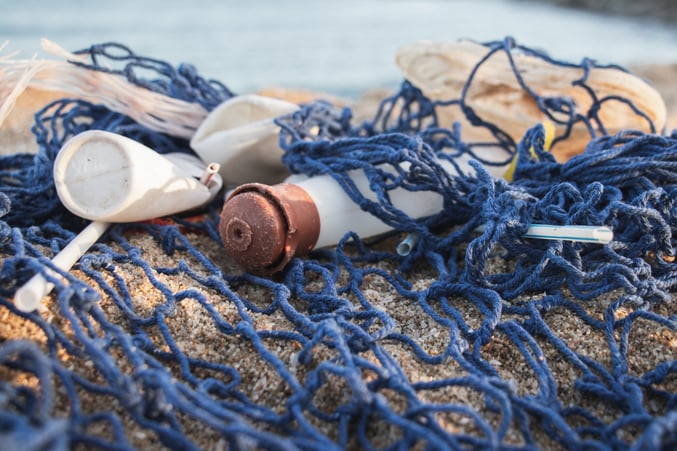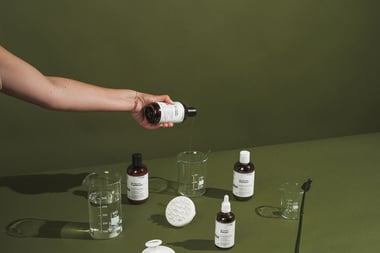
Tom Corfield
This is the first version of CleanHub’s plastic footprint calculator for sustainable beauty brands.
We're really excited about it! But it is only a first step. So I want to be completely transparent about how this is working and where we hope to take it in the future so that you can make an informed decision about how to use this data.
CleanHub's vision is that brands using plastic packaging can quickly and accurately calculate their plastic footprint so that they can start taking action to tackle it for clean oceans. You can request an invite for a quick and easy way to calculate your brand's plastic footprint here.
How does this work and what are the limitations?
- Right now this is an estimation tool - it will not be 100% accurate.
- It uses first-principles calculations to estimate the weights of different sizes of standard plastic cosmetics packaging (rather than using weights provided by different manufacturers).
- We’ve taken this approach because we wanted to quickly get to something that is useful for everyone - the calculations enable the estimation of all different packaging sizes very easily.
- But this comes with limitations. For example, all shapes/designs of bottles have been estimated in the same way, so this will never be totally accurate for all variations of a 200ml bottle.
- If you want to use this version of the calculator as the basis for your Plastic Footprint we recommend adding a margin of error of ~30% on top of the estimate provided.

Why is it only cosmetics
We’ve started with trying to estimate the weight of cosmetics packaging first because
- We have seen that the cosmetics industry is particularly concerned about plastic use because there is often no viable alternative.
- We found that cosmetics have a relatively small and standardized set of packaging and container alternatives. This makes it easier to build an estimation tool.
After we’ve got the calculator working well for cosmetics we will move into other sectors.  How did you choose what packaging types to include?
How did you choose what packaging types to include?
We analyzed the packaging used by all of our existing cosmetics customers. We found that these packaging types covered almost all of
their products:
- Bottles
- Tubes
- Jars
Along with these lid types:
- Basic Cap
- Pump
- Disk top / Pour Cap
- Flip-top / Hinge Cap
- Atomizer / Spray
- Jar lid
How do the calculations work?
For each of the three container types (bottle, tube, jar) we have approximated the container to a shape for which it is easy to calculate the surface area:
- Bottle = a tube closed at both ends
- Tube = a wedge with a square end
- Jar = a tube closed at one end
We then multiply the surface area of the container by an estimated thickness (1mm for bottle and tube, 1.5mm for jar). This gives us the volume of plastic used. We multiply this by an approximate density for plastic in order to get the weight estimate (we assumed 1m^3 of plastic = 1000kgs). Please feel free to contact us at marketing@cleanhub.com if you would like to see the exact formula used.
Having generated some estimates we sense checked these against public data from manufacturers and against data we have collected when doing manual footprint estimates (where we weighed the empty containers). We found that our estimates were typically within 20% of the real data points.
For lids/caps we did not do estimates from scratch. Instead, we took fixed values for these weights using publicly available data:
| Lid options | Weight estimate (kg) | Source |
| Basic Cap | 0.004 | The Plastic Bottles Company |
| Pump | 0.012 | The Plastic Bottles Company |
| Disk top / Pour Cap | 0.004 | The Plastic Bottles Company |
| Flip-top / Hinge Cap | 0.003 | The Plastic Bottles Company |
| Atomizer / Spray | 0.008 | The Plastic Bottles Company |
| Jar lid | 0.02 | The Plastic Bottles Company |
What’s next?
We noted above that we plan to expand this calculator model into other industries. We’re keen to do that, but first, we would like to add further robustness to this cosmetics calculator. Our goal is that (where possible) brands will be able to use the weights of their actual packaging (provided by the manufacturer) rather than using our estimates. This will make the calculator 100% accurate as a tool for measuring plastic footprint. 
So we propose to start building an open-access database of plastic packaging weights that anyone can use.
We think that this information should be as widely accessible as possible. We are keen to talk to anyone who might be able to contribute information to the database, including manufacturers and distributors. In the meantime, we have already started to add data points available on public websites so that we can start to build out our coverage.
We are keen to start working on Food and Drink and Apparel. If you’re in these sectors (or others) and would like to register your interest / help us develop the tool then please contact us at marketing@cleanhub.com - we’d love to hear from you.




.webp?width=380&name=Founders%20(1).webp)
-1.jpeg?width=380&name=8a81c9a8-61ad-450f-a366-9c4b7a70237c_8G3bu04g%20(1)-1.jpeg)

.jpg?width=380&name=_DSC7838%20(1).jpg)
.webp?width=380&name=Collecting-plastic-waste%20(1).webp)

.webp?width=380&name=CEOfounders%20(1).webp)
%20(1).jpg?width=380&name=MRF%20opening%20photo%203%20(1)%20(1).jpg)
